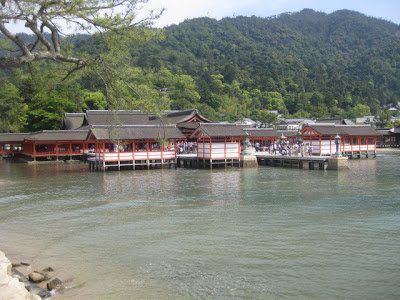Stretching over some 400 square kilometres, including forested area, Angkor Archaeological Park contains the magnificent remains of several capitals of the Khmer Empire of the 9th to the 15th centuries, including the largest pre-industrial city in the world. The most famous are the Temple of Angkor Wat and, at Angkor Thom, the Bayon Temple with its countless sculptural decorations.
Angkor Archaeological Park was declared a UNESCO World Heritage site in 1992. At the same time, it was also placed on the List of World Heritage in Danger due to looting, a declining water table, and unsustainable tourism. UNESCO has now set up a wide-ranging program to safeguard this symbolic site and its surroundings.
Angkor itself has no accommodations and few facilities; the nearby town of Siem Reap, just 6 km. south, is the tourist hub for the area.
The temples of Angkor are highly symbolic structures. The foremost Hindu concept is the temple-mountain, where the temple is built as a representation of the mythical Mount Meru: this is why so many temples, including Angkor Wat itself, are surrounded by moats, built in a mountain-like pyramidal shape and topped by precisely five towers, representing the five peaks of Mount Meru. The linga (phallus), representing the god Shiva, was also critical and while the lingas themselves have largely gone, linga stands (carved, table-like blocks of stone) can be found in many if not most rooms in the temples. There was also a political element to it all: most kings wanted to build their own state temples to symbolize their kingdom and their rule.

While early Angkor temples were built as Hindu temples, Jayavarman VII converted to Mahayana Buddhism c. 1200 and embarked on a prodigious building spree, building the new capital city of Angkor Thom including Bayon, Ta Prohm, Preah Khan and many more as Buddhist structures. However, his successor Jayavarman VIII returned to Hinduism and embarked on an equally massive spree of destruction, systematically defacing Buddhist images and even crudely altering some to be Hindu again. Hinduism eventually lost out to Buddhism again, but the (few) Buddha images in the temples today are later Theraveda additions.

One element that continues to mystify archaeologists is the baray, or water reservoir, built in a grand scale around Angkor: for example, the West Baray is a mind-boggling 8 km by 2.3 km in size. While it has long been assumed that they were used for irrigation, some historians argue that their primary function was political or religious. Not a single outlet has been found, either by eye or by NASA imaging. The moat around Angkor and the West Baray still contains water, but the rest have dried up.
Ankor Wat Located six kilometre north of Siem Reap, Angkor Wat is one of the largest of Khmer monuments. Built around the first half of 12th century by King Suryavarman II, the temple's balance, composition and beauty make it one of the finest monuments in the world.
Though 'Wat' is the Khmer (Cambodian) word for temple, the westward orientation of the structure is atypical of temples. Scholars believe that the architecture and sculptures are that of a temple where Lord Vishnu was worshipped but it was also built as a mausoleum for the king after his death.
Angkor Tom
Built in the latter part of the 12th century by King Jayavarman VII, Bayon is one of the most widely recognised temples in Siem Reap because of the giant stone faces that adorn the towers of Bayon. There are 54 towers of four faces each, totaling 216 faces. There is still a debate as to who is being depicted in the faces. It could be Avalokiteshvara, Mahayana Buddhism's compassionate Bodhisattva, or perhaps a combination of King Jayavarman VII and Buddha.
Ta Prohm Built during the time of king Jayavarman VII and is best known as the temple where trees have been left intertwined with the stonework, much as it was uncovered from the jungle. It might be considered in a state of disrepair but there is a strange beauty in the marvelous strangler fig trees which provide a stunning display of the embrace between nature and the human handiwork.
This is one of the most popular temples after Angkor Wat and the Bayon because of the beautiful combinations of wood and stone. Black and white film photographers especially love this site because of this and most of the stunning postcard shots of Angkor's trees come from here; pop culture fans, on the other hand, may recognise a few scenes from Angelina Jolie's Tomb Raider.
While the temple is very popular, most visitors follow a central route and the sides of the complex can be surprisingly quiet. Note that large sections of the temple are unstable rubble and have been cordoned off, as they are in real danger of collapse. As of 2010, authorities have started to restore Ta Prohm. All the plants and shrubs have been cleared from the site and some of trees are also getting removed. A crane has been erected and a large amount of building work is underway to rebuild the temple, much of it seemingly from scratch. Wooden walkways now block some of the previously famous postcard photos. People that want to take a pretty picture of a building overgrown by a huge tree without the crowds, walkways, cranes etc. might want to check out the gatehouse in the back of the Ta Som complex instead.























































